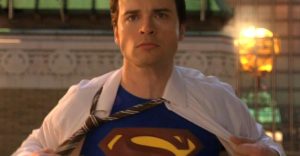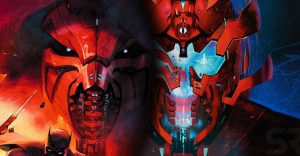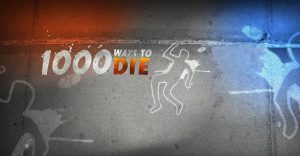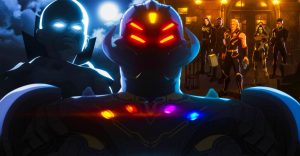Every DC Comics Crisis Event: From Best To Worst

In times of crisis, the DC Universe offers a healthy perspective on world-ending events. DC Comics‘ biggest storylines are often titled with the word “Crisis” to indicate crossovers of alternate Earths, and/or a reboot of the entire DC multiverse, which has happened at least once a decade since the 1980s. Marvel Comics uses the descriptor “Secret” (e.g. Secret Wars, Secret Invasion) in a similar way, and the Big Two apparently agree to overlap on usage of “Infinite/Infinity.” Which of DC’s crises are the greatest in terms of storytelling, art, and influence? We may consider this, because the events are numerous, but not actually infinite.
Sorting out what constitutes a DC Crisis can be a tricky business, but worth the effort for the sake of conscientious fandom. New readers and longtime fans alike may undertake the exercise of orienting themselves in Crisis continuity, inevitably becoming frustrated yet amazed, and eventually developing strong opinions about how the next crisis could fix all these problems. According to an easter egg planted by Brian Michael Bendis in Action Comics #1008, there are seven official DC Crisis events. The exact count is debatable but provides a useful framework. Here’s a proposed ranking of DC’s apocalyptic/epochal events from best crisis to worst crisis.
Crisis on Infinite Earths (1985)

The “first” crisis remains the most influential, because it created a recurring tradition which did not exist previously. Recently adapted for the Arrowverse TV shows, the 12-part maxi-series featured gorgeously busy art from George Perez and an epic storyline by Marv Wolfman. Earths are destroyed on virtually every other page, and in between annihilations we’re introduced to the Monitor, the skull-faced Anti-Monitor, and perhaps most critically, the storytelling convention in which the Flash just shows up at plot-essential moments while he’s running desperately through the timelines. Although the loss of Supergirl is arguably more memorable, Flash’s sacrifice in Crisis on Infinite Earths is incredibly poignant, and in the enduring Crisis storylines he’s consistently the one holding the story together though the universe may be falling apart.
Flashpoint (2011)

And what better way to make the “point” about Flash’s centrality than to recognize Flashpoint, the first Crisis without “Crisis” in the title? Essentially, Flash messes up the multiverse with his time-barrier-breaking speed. It’s a particularly satisfying story because the ultimate threat is as much in Flash’s decision-making as it is from an external ultimate villain. More than the other Crises, Flashpoint focuses on bonds and obligations to family, and culminates in a touching moment of grace between Flash and Batman. The energetic action sequences (also lively in the animated adaptation) are grounded in essential character traits of the Justice League heroes, fueling a brutal war between Wonder Woman and Aquaman, and illuminating iterations of Batman and Superman.
Final Crisis (2008)

The loopiest and most irreverent of the Crises, in which Darkseid owns everyone, and Superman sings a big song towards the end. Like Identity Crisis and the recent Heroes in Crisis,Final Crisis is initially framed as a murder mystery, then becomes a surreal, socially-relevant head trip in writer Grant Morrison’s distinctive style. (Note: Identity Crisis and Heroes in Crisis are not included on this list because they involve relatively little universe-crossing and Earth-rebirthing, and time’s passage has given us several series which better fit the Crisis model.) Like much of Morrison’s work, the ambitious ideas occasionally wander, but the epic moments are vividly realized. Most notably, Darkseid kills Batman as much as Batman has ever been killed, which is to say, not exactly killed. An especially chaotic concluding issue sends Superman to previously-unseen realities to meet an Afrofuturistic Justice League, and ends up with him singing a powerful tune into a Miracle Machine.
Dark Nights: Metal (2017)

The Batman-centric, musically-inspired Metal series merits inclusion on the Crisis list, both for its audacious universe-rebuild and its sheer epic scale. The Justice League forms a Voltron-esque giant robot in the first issue, and more clever surprises ensue. Writer Scott Snyder posits another plane underneath the known 52 universes, a dark multiverse from which ingeniously evil variations of Batman arise. There’s a strong through-line from the events of Final Crisis, references to familiar Crisis motifs like Krona’s gripping hand and the Anti-Monitor’s brain, and a cameo by baby Darkseid. It all ends with a new beginning for the Justice League, signalling possible redemption after a struggle with consuming darkness, as these crises tend to do. (Note: As of this writing, the forthcoming sequel Dark Nights: Death Metal will likely be delayed due to the COVID-19 pandemic; the irony of comic book crises postponed by real-world crisis is to be savored with good humor.)
Zero Hour: Crisis in Time (1994)

Despite Infinite Earths’ attempt to downsize the multiverse, DC’s 1990s timeline still needed to rewrite its own history. At this point, Green Lantern/Hal Jordan was the all-powerful Parallax, driven by the desire to undo the destruction of Coast City. Well-intentioned but cosmically uneven, the series is probably best enjoyed by fans who want to see Hal Jordan as evil as he’s ever been. Hint: Green Lantern with cape is rarely a good Green Lantern.
Convergence (2015)

This series is essentially a mirror image of Marvel’s revamped Secret Wars, published in the same year. Its premise featured iconic DC cities competing on a custom planet collaged from the various universes, much like Secret Wars’ Battleworld. The timing of Convergence was particularly weird, given that its publication occurred only one real-time year before DC Universe: Rebirth, which had much further-reaching consequences (with the benefit of hindsight).
Rebirth (2016)

Infinite Crisis (2005)

To be clear, there is nothing definitively wrong with Infinite Crisis, but for the purposes of this ranking it is the mid-life Crisis: a melancholy but survivable event which seems far from both beginning and end of the journey. To that point, the climactic conflict in Infinite Crisis is between Superman and a bloodthirsty version of Superboy, with all the generational friction that implies. Geoff Johns’ later Crisis, Flashpoint, was the much more fun crisis, with significantly more Flash.
Honorable mention must be made of two relevant DC events: Doomsday Clock (2017-2019) re-discovered Watchmen‘s Dr. Manhattan as the logical nexus point of alternate universes (as per Rebirth) and the precisently-titled “Crisis on Earth-One!” in Justice League of America #21 (1963) originated not only the “crisis” designation but the “Earth-One” and “Earth-Two” terminology which is used to this day. Since DC Crises are as close to a sacred tradition as exists in American comics, it’s a surety that this list will expand on the next occasion of the multiverse needing to contract. Will a future Crisis event find a new way to make everything new again? Time, and The Flash, will tell.
About The Author

















